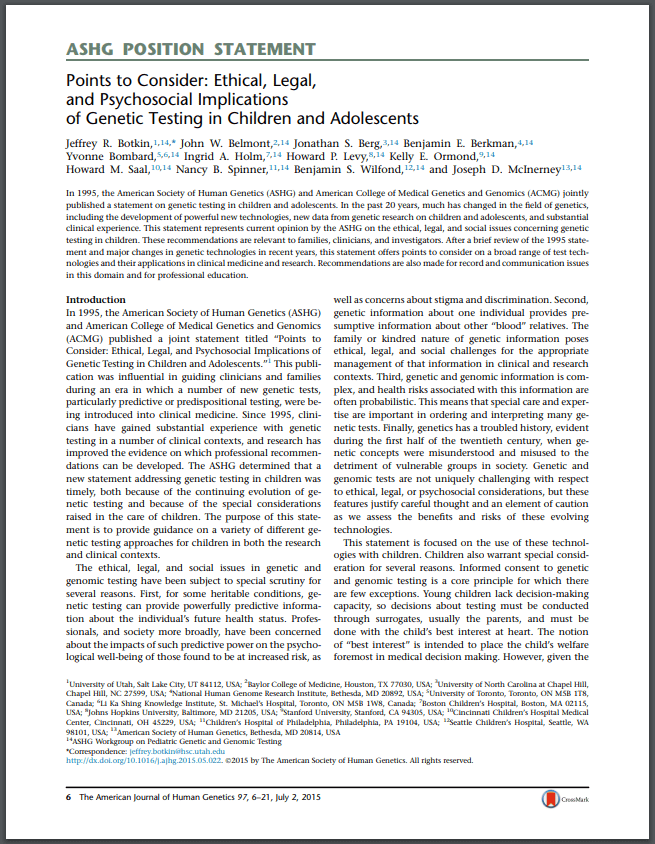Posted By: Cara Cavanaugh, MSc, Cell Press
What happens to a paper once it is published? After the research is over, the proofs are reviewed, and the paper is out in the world, how is it used and by whom?
To answer these questions, we traced the post-publication trajectory of ASHG’s position statement, “Points to Consider: Ethical, Legal, and Psychosocial Implications of Genetic Testing in Children and Adolescents.” The statement was published in The American Journal of Human Genetics (AJHG) in 2015 and was an update from two decades earlier. Following the history of the paper since its publication shows us the reach that an ASHG position statement can have over three years.
About the Position Statement

The position statement gives recommendations for when and why families should decide to perform genetic tests on children and adolescents. “We felt that it was timely to update the statement across a range of issues,” says first author Jeffrey Botkin, MD, MPH, a professor and chief of the Division of Medical Ethics and Humanities at the University of Utah. “Our primary focus was genetically testing children for adult-onset conditions when there is no intervention during childhood. There hasn’t been a lot of research on the impact of such testing because folks felt that it was unethical under any context. We wanted to soften the perceived stance that such testing should never be conducted and have the position of the society be a little more flexible. We recognize that there may be circumstances when such testing might be appropriate for the child and family. We also wanted to encourage more research on these issues.”
Academic Citations and Public Conversation
Since its publication, the position statement is one of the top downloaded papers in AJHG’s history, with over 5,000 downloads as of 2018. After publication, to make the content more accessible to readers, ASHG created infographics that explain the issues and intricacy around childhood genetic testing. The paper has been cited by Genetics in Medicine, Pediatrics, Blood, Nature Reviews Genetics, and more than 80 other academic titles.
The statement has also been cited outside of the scientific research context. For example, it has impacted legal academic discourse. In one 2016 paper, Sénécal et al. discuss the legal approaches to healthcare decisions for minors in the European Journal of Human Genetics to the ASHG position statement as a “more nuanced approach” to how genetic testing should be pursued. They praise the statement for advising that physicians should inform families of all genetic testing options, even if the family has decided not to pursue any tests. Another paper by Otero in the European Journal of Health Law uses the position statement in a narrower context, specifically to analyze European and Spanish legal frameworks. These papers are just two of several examples of how one position statement from scientists can contribute to legal analysis internationally.
In addition to the academic studies discussed above, the position paper was also featured in the mainstream media. It gained coverage in NPR, VICE, and Pacific Standard. Exposure in these news sources helped engender public conversations online about the ethics of genetic testing in children.
What’s Next?
This paper shows the broad reach the ASHG community has in important societal and cultural issues of our time. As genetic testing appears more frequently in the news and becomes increasingly controversial, especially with products like direct-to-consumer genetic testing kits, it is imperative that we fully debate and consider how this could affect children and adolescents. ASHG policy statements, like the one published in 2015, provide us with long-lasting resources for continuing those discussions.
Cara Cavanaugh, MSc, is a Marketing Contractor at Cell Press. She earned a BA in History of Science from Princeton University and a MSc in Science Communication from Dublin City University while on a Fulbright Award.
